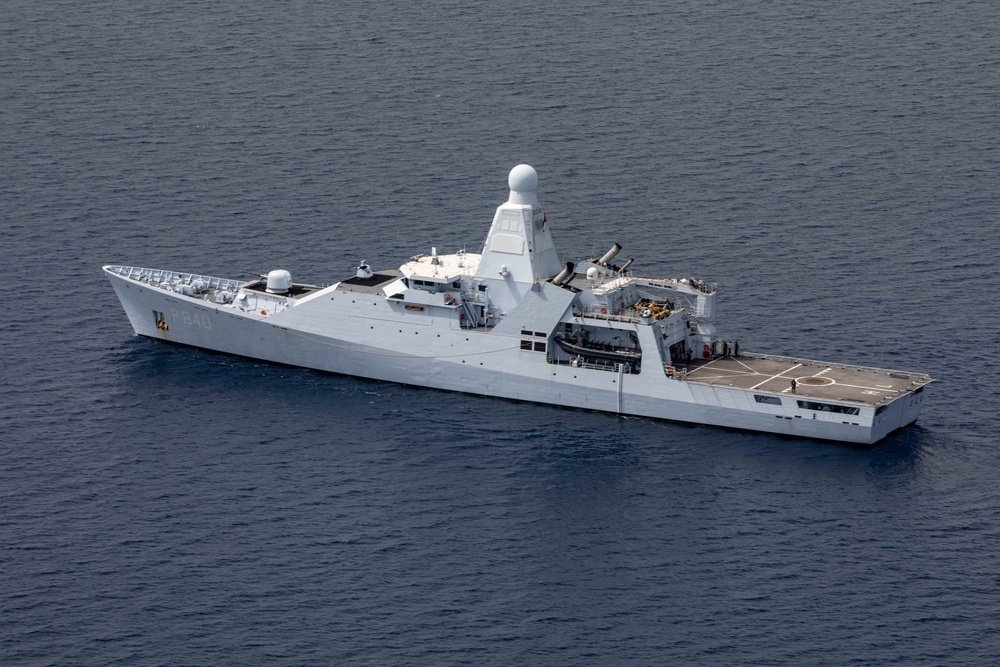Defense is replacing the 2 large landing ships (LPDs) and 4 Oceangoing Patrol Vessels (OPVs) with 6 ships of the same new class. These Amphibious Transport Ships are suitable for use in war conditions as well as for modern amphibious operations. The vessels can also function as station ships, for example. The first new Amphibious Transport Ship should arrive in 2032. State Secretary Christophe van der Maat reported this to the House of Representatives today.
For example, modern amphibious doctrine calls for light, rapid and dispersed action, with light logistical support. The new generation of ships is therefore smaller in size than the current LPDs. This could, for example, lead to multiple Amphibious Transport Ships being deployed simultaneously. The OPVs, on the other hand, are not currently designed for tasks high on the violence spectrum. Due to the deteriorated international security situation, the navy needs ships that are suitable for war conditions.
In addition, both ship classes reach their end of life at approximately the same time. By combining the classes, the Royal Navy gains more flexibility in designating one or more ships for a specific mission. The choice of 1 ship class instead of 2 increases efficiency. It also ensures economies of scale in purchasing, training and maintenance, among other things.
Industry
As recently reported with the acquisition of the Air Defense and Command Frigates, Defense is also involving Dutch industry in this project. This is done, among other things, through the Maritime Manufacturing Industry. One of the partners is Damen Naval. Dutch knowledge institutes such as TNO, NLR and MARIN can also contribute.
Collaboration with British
There is also close cooperation with Great Britain. Dutch and British marines have been working together in the UK/NL Amphibious Force for more than 50 years. Although both countries do not purchase identical ships, they do want to have the same subsystems. This should benefit mutual cooperation. This could include the joint acquisition of components such as cranes, hoisting installations and the dock door at the rear of the ship. The purchase also includes helicopter installations, propulsion systems and modular accommodation systems.
Tuning
The inflow of the new Amphibious Transport Ships and the outflow of the current 2 LPDs and 4 OPVs are coordinated. A ship is only taken out of service as soon as a new ship comes in. From 2032 onwards, a new vessel must be operationally deployable every year. According to the current planning, this applies to the last acquisition in 2038. That is actually just too late for the Rotterdam. The ship will reach its end of life in 2028. Defense is therefore examining what measures are necessary to keep the ship in service until at least 2032. The outflow of the other ships approximately corresponds to the end of their lifespan. The project costs €1 billion to €2.5 billion.

